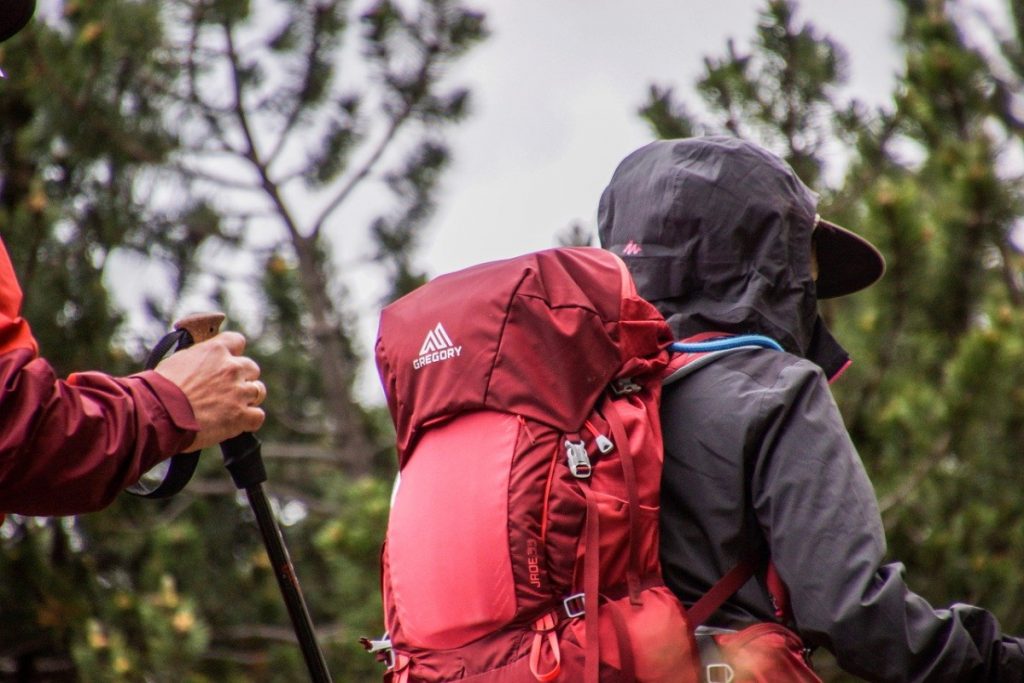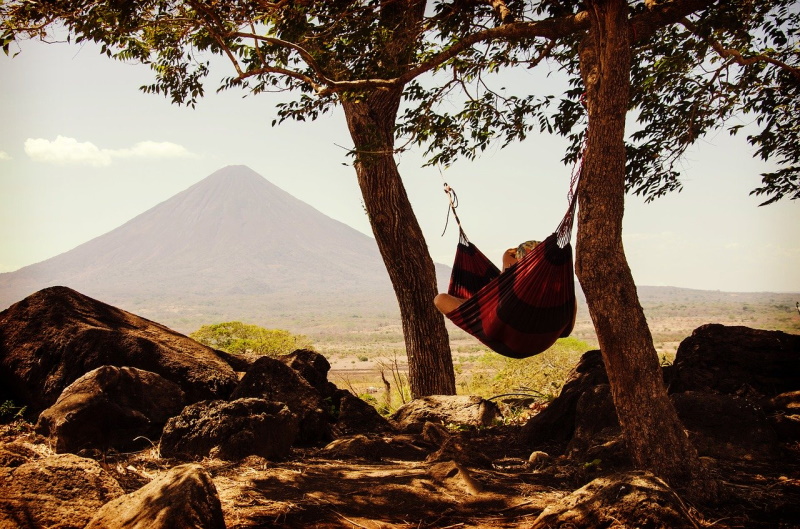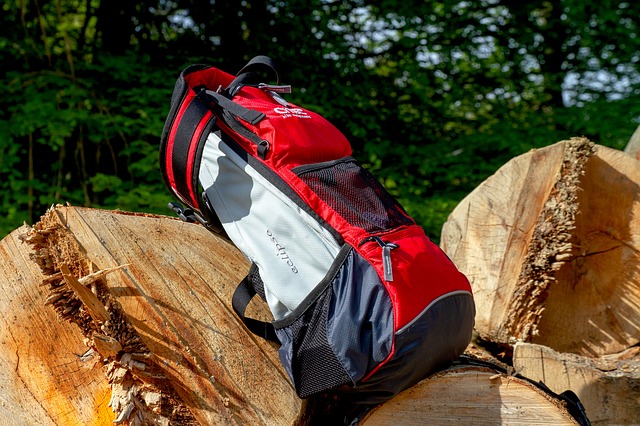Backpacking involves trekking for days or even months over tricky and rugged terrain. And this means that you will be hauling a heavy pack on your back most of the time. Therefore, it’s important to keep the weight of your backpack as low as possible. Lightening your backpack means fewer pains, aches, and blisters. You will also be able to explore more freely and cover more ground. So, how can achieve this? Here are some tips that can help you to lighten your load.
Choose a Lighter Backpack
If you are aiming to reduce the weight of your load during your hiking trip, then you should start by choosing the right backpack. Your backpack should not add more than 3 pounds to your hiking load. And you can achieve weight reduction both by choosing a lightweight backpack and reducing its size. Apart from weight and size, you should also make sure that the pack you will be using during the backpacking trip is comfortable. An ill-fitting backpack will dig into your shoulders, bounce around, bruise your hips or even lead to irritation on your lower back. And that’s why it’s important to choose the right backpack.
Apart from weight and size, you also need to check the design of the backpack. There are two main types of backpacks on the market – frame backpacks and frameless backpacks. Frame backpacks are equipped with a rigid aluminum frame, which provides excellent load transfer, thus minimizing pressure on your shoulders. They also come with wide, comfortable straps. Modern frame backpacks now come with enhanced ventilation features. Frame backpacks also feature plenty of attachment points, which you can use to carry items like sleeping bags, tents, and bear canisters, among others. Frameless backpacks, on the other hand, are lighter than frame backpacks. Most ultralight hikers and backpackers opt for smaller frameless packs since they are forced to leave behind non-essential items, thus helping to keep the weight down. Whether you should opt for a frame backpack or a frameless one will depend on the length of your hike, as well as personal preferences. But whichever pack you choose, make sure it’s a lightweight one so that it doesn’t add too much weight to your load. Also, it’s highly advisable to choose one with several compartments. It will help to distribute the load evenly, thus helping to reduce the burden.
Choose an Ultralight Shelter
If you are going for an extended backpacking trip, then you should opt for an ultralight shelter. And if the weather is fine, there are no bugs to worry about and the temperatures are warm, then you can even leave the shelter at home and reduce the weight even further. You just need to spread out your sleeping bag or set up a hammock, and you will have a cozy place to spend your night. In case you need shelter from the sun or you prefer some privacy, a lightweight tarp should be enough for this job. If the area has bugs, then you simply need to set up a bug net or mesh under the tarp.
An ultralight tent is also a viable option when it comes to shelter. These tents weigh approximately 3 pounds or even less, which means they will only add a small amount of weight to your load. If you opt to use the ultralight tent as your shelter, make sure you don’t carry the footprint. Carrying it will just add unnecessary weight to your backpack, and it’s not essential. You can also leave the rainfly at home if the weather is going to be friendly.
Repackage Personal Care Items
You might be tempted to carry an entire tube of toothpaste, sunscreen lotion, hand sanitizer, and other personal care items. However, doing so will only add unnecessary weight to your pack. Furthermore, there is a high chance that you will never use a full tube of toothpaste or sunscreen lotion when you are hiking. Therefore, you just need to carry the amount that you will need. For instance, you can transfer a smaller amount into a smaller container and leave the larger tube at home.
Reduce the Weight of Your Consumables
Food, fuel, and water will be the heaviest items in your backpack. If you will be trekking for five days, then you will have to carry at least 11 pounds of food and at least 4 pounds of water. This means that food and water alone will add a minimum of 15 pounds on your load for a 5-day trek. However, when it comes to reducing the load, most people only focus on non-consumable items like sleeping bags, backpacks, clothing and tents. If you want to lighten your backpack and make your hike easier, then you need to pay equal attention to the consumables. So, how can you reduce the weight of the consumables without compromising your safety and health?
- Food: For backpacking, you should choose foods that are light to carry and they have a high nutritional content. Dense and high-calorie foods fall under that category. High-calorie, fatty foods like coconut milk, olive oil, walnuts, sunflower seeds, and pecans will supply the required nutrients while helping to keep the weight low. Avoid foods with high moisture content and instead opt for dehydrated and freeze-dried foods. Also, you should avoid carrying more food than you will need.
- Water: Water weighs approximately 2 pounds per liter. If you carry two liters of water, then you will add at least 4 pounds on your load. So, how can you reduce the amount of water you will carry? First, ensure you do some proper background research of the entire hiking area, from the trailhead to the end. With that information, you can calculate the distance between one water source to the next one and then carry only the water that you will need. Secondly, before you break camp in the morning, ensure you drink at least half a liter of water. That water will keep your body hydrated throughout the day, thus reducing the need to carry additional water. If your hiking path only has a few water points, drink at least one liter at each point so that you can maintain optimum fluid levels in your body. Also, the time of the day when you will be trekking can also determine your water uptake. If you have a habit of hiking from 10 am to 3 pm, then you will sweat profusely, meaning you will need to drink more water. On the other hand, if you only trek early mornings and, late afternoon and early evening, your water needs will be minimal.
Also, it’s advisable to reduce the number of times that you cook per day. One cooked meal per day should be enough. Less cooking means that you will not carry a lot of fuel. If you will be hiking in warmer temperatures, then you can avoid cooking altogether, meaning that you will trim the load further by eliminating cooking supplies.
Trim Down the Clothes
One of the most common mistakes among adventure travelers and beginner hikers is that they tend to carry too much clothing. It’s like they empty their entire wardrobes into their backpacks. However, you don’t need all these clothes. After all, you will be spending most of your time in the wilderness and not attending a dinner with your friends or a fashion show. In fact, you don’t need to wear a clean outfit every day when you are hiking, which means you are at liberty to reuse your clothes. The clothes you will carry will depend on the hiking season. If you will be hiking during the summer, then a few long-sleeved t-shirts should be enough. On the other hand, if you are going for a winter hiking trip, then you simply need to invest in a high-quality layering system, featuring a few base layers, a single insulating layer, and one outer shell. Also, you will not need clean underwear and socks for every single day that you will be hiking. Therefore, leave all these extras at home, including bulky jackets, extra shoes or anything else that might not be necessary.
Pack Your Gear and Adjust Accordingly
By now, you’ve already eliminated some items that you felt they might not be needed during your hiking trip. It’s now time to pack everything inside the backpack. As a general rule, you should keep the heavier items at the center of the pack – they should not be too close to the top or bottom. Also, they should be as close as possible to your back. Make sure you fill every space in the pack. The space inside your cooking pots should also have some items. The close packing of gear will prevent the shifting of the items, thus making sure that your load balance is not affected. If your pack is already filled up and there are too many items that you have to strap on to the outside of your pack, then you should consider reducing your load further. Hanging too many items on the outside of your backpack will definitely affect your stability, weight balance and distribution, and hiking comfort.
When packing your backpack, make sure you organize it well. If your hike is going to last for several days, then you should pack according to the length of your trip. Frequently used items should be close to the top as possible. You can also pack them in the external pockets to make them easily accessible. Organizing your backpack well will save you the time, and effort of unpacking and packing every time you need something when hiking. It will also help you to eliminate the extra baggage.
Closing Remarks
As you can see, you have several ways of lightening your load when backpacking. Some of these options might force you to lose some comfort and luxury. However, the sacrifice will be worth it. Traveling with a lighter load will minimize fatigue, and help you to hike faster – which translates to more miles covered per day. Packing light is a skill that comes with time. After going for several backpacking trips, you will eventually master it and learn what works best for you.





0 comments